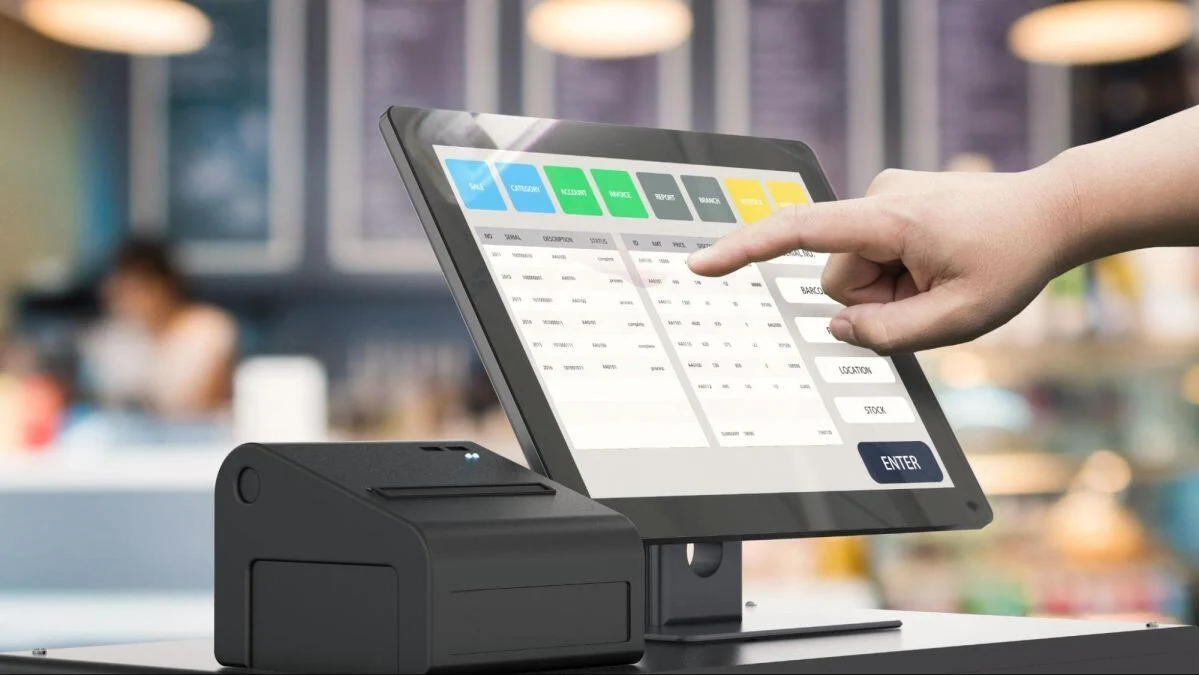POS System and Its Advantages on Business Growth: Positive Aspects for Marts and Restaurants

In today’s competitive business environment, efficiency, accuracy, and customer satisfaction are key factors that determine growth. One technological solution that has revolutionized the way businesses operate—especially in marts and restaurants—is the Point of Sale (POS) system. A POS system is much more than a digital cash register; it’s an all-in-one business management tool that streamlines operations, enhances customer experience, and boosts profitability.
What is a POS System?
A POS system is a combination of hardware and software that manages sales transactions. It records purchases, processes payments, manages inventory, tracks customer data, and generates reports—all in real time. Modern cloud-based POS systems go beyond just handling sales; they integrate multiple business functions into one platform, enabling smarter and faster decisions.
Advantages of POS Systems for Business Growth
1. Improved Efficiency and Speed
A POS system automates several manual tasks that often slow down daily operations. Whether it’s scanning barcodes in a mart or managing multiple tables in a restaurant, POS software ensures fast and error-free transactions. This speed not only enhances the customer experience but also allows businesses to serve more customers in less time, directly impacting revenue growth.
2. Accurate Sales and Inventory Management
Manual inventory tracking is time-consuming and prone to errors. A POS system provides real-time inventory updates—every time a sale is made, the stock count is automatically adjusted. This helps avoid issues like overstocking or running out of popular items. For restaurants, it ensures ingredients are tracked accurately, reducing food waste and controlling costs. For marts, it means shelves are always stocked with in-demand products.
3. Data-Driven Decision Making
One of the most powerful features of a POS system is its reporting and analytics capability. It generates detailed reports on sales trends, best-selling products, and peak business hours. Business owners can use this data to identify which items are performing well and which are not, allowing for more strategic planning. In restaurants, it helps managers understand customer preferences and design menu offerings accordingly.
4. Enhanced Customer Experience
Customer satisfaction plays a major role in business growth. POS systems allow businesses to implement loyalty programs, offer discounts, and track customer purchase history. In restaurants, they enable faster billing, split payments, and digital receipts—making the dining experience seamless. In marts, customers enjoy quicker checkout processes and personalized offers, encouraging repeat visits.
5. Simplified Employee Management
POS systems often include staff management tools that track working hours, performance, and sales made by each employee. This makes it easier for managers to evaluate productivity, reduce time theft, and schedule shifts efficiently. By automating administrative tasks, businesses can focus more on growth and customer service.
6. Multi-Location Management
For business owners managing multiple outlets, a cloud-based POS system is a game changer. It allows real-time access to data from all locations on a single dashboard. This unified control helps ensure consistency across outlets, whether it’s pricing, promotions, or inventory management.
Positive Aspects of POS Systems in Marts
In marts and retail stores, a POS system ensures smooth checkout operations, better stock management, and improved customer service. It also minimizes human errors during billing and helps track sales trends effectively. Integration with barcode scanners and digital payment options creates a modern, convenient shopping experience that customers appreciate. Moreover, the ability to monitor performance remotely makes management more efficient and data-driven.
Positive Aspects of POS Systems in Restaurants
For restaurants, POS systems have transformed the dining experience. Orders taken at tables can be instantly sent to the kitchen display, reducing errors and wait times. Integrated menu management helps in quickly updating dishes or prices, while table management features ensure smoother service flow. Additionally, digital payment integrations and receipt management enhance convenience for both customers and staff. POS systems also help restaurants analyze sales patterns, manage suppliers, and minimize waste—all contributing to higher profitability.
Conclusion
A well-implemented POS system is not just a tool—it’s a strategic investment in business growth. By improving efficiency, reducing errors, and delivering valuable insights, POS systems empower marts and restaurants to operate more intelligently and serve customers better. As technology continues to evolve, adopting a modern POS system isn’t just an option; it’s a necessity for businesses aiming for long-term success and sustainable growth.






